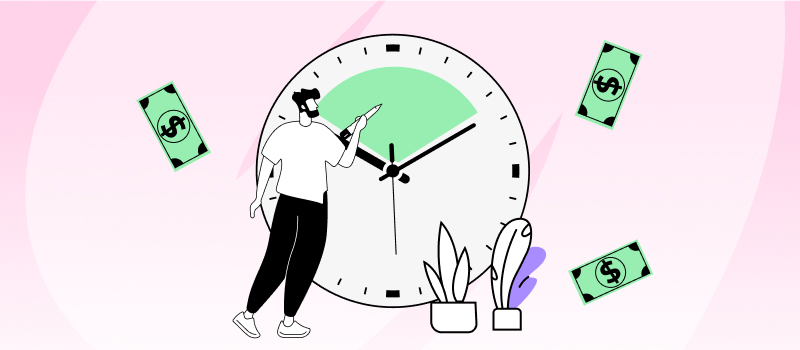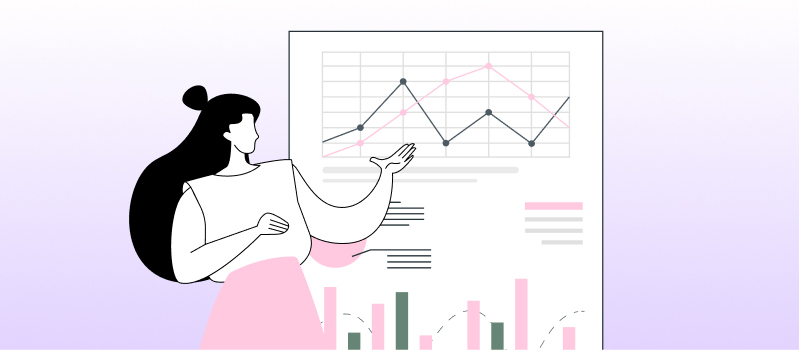Creative projects come in various forms. If you work for a creative agency, you will run creative projects for clients who have some marketing or promotional goals in mind. And if you are a creative team in a company, you will be producing your company’s art graphics, media resources, promotional materials, communication materials and more.
As a creative project manager, you should collaborate with your team of creative professionals to shape a completed product using their unique talents and objective standards of quality. This process is unlike project management in other fields because it requires you to innovate and be imaginative. However, without fusing creativity with robust business principles and project management techniques, it’s hard to achieve good results.
Time tracking is one of the most effective techniques to drive any project to success. And here we will talk about its value for creative project managers. So, stay tuned!
What Is Creative Project Management?
Creative project management is the process of planning, executing and launching any campaign or product developed as part of a creative effort in a creative industry (i.e., architecture, design, fashion, filmmaking, etc.).
It starts with identifying which tasks you need to complete, estimating those tasks and mapping out your overall approach to work. It also involves close team collaboration and communication with clients. And above all else, creative project managers monitor performance progress as closely as possible and analyze work results on every step towards the project launch.
Creative Project Manager Responsibilities
When leading a creative project, you need to guide your team along various stages as the project begins, progresses and nears its completion. And as part of the job, you have to do the following things:
- Creative briefing
- Guiding creative operations
- Brainstorming
- Determining the quality of creative work
- Reviewing and revising product draft
- Client / stakeholder approval
- Project sign-off and publishing
There is no break or downtime for creative project managers. You have to be present for all stages of creative project operations. And while you’re actively involved in the thick of the creative process, you also have overarching leadership responsibilities to keep your team on the right path to completing the project.
How Creative Project Managers Can Ensure Project Success
1. Hold team members accountable for designated tasks
A project’s timing can be lagged if every team member works one after the other, managing entire stages independently. You’ll also face problems if all creative minds work over each other on the project simultaneously. The project results will be late and likely muddled with too many outlooks that were implemented in a disorganized fashion.
That’s why it helps to designate roles and tasks for your team members. Assign these according to their talents to effectively develop pieces of the project during the creative process. Giving them focused duties is also a method to ensure all members are evenly contributing to the final product. This will establish balance and efficiency. If there are any issues, you’ll know who to go to and manage to find solutions together.
2. Keep your team on track
As you send your team members off to work on their creative mini-projects, they will need time and room to shape their approach and form solutions independently. While you don’t want to ineffectively micromanage, you do need to keep a close eye on their progress once you’ve stepped away from the planning stage into the implementation process. You’ll want to know that they’re staying within the project’s established constraints, like the budget, planned use of resources and the original plan. And that’s when time tracking comes in handy.
What Is Time Tracking?
Time tracking involves keeping data on your team member’s work hours. You can use timesheets, automatic background software or manual tracking tools that report the timing that your team is committing to their project tasks and other items in their workdays. Time tracking tools make their productivity, deadline completion or delays measurable.
While you can use certain strategies like weekly check-ins, time tracking will help you follow all details of your team’s timing. You’ll know if they’re really investing as much time as they should into their work or if they could put in more effort. If you have members approaching you with concerns of being overworked or inability to meet the project’s stage deadlines, you can review how they’ve been conducting their creative process.
How Time Tracking Can Help Creative Project Managers?
Without relying on useful tools, how can you determine if your team is completing their tasks on time?
You need to track your creative team’s timing. When working with artists, you may find that they need to invest a lot of focus on developing ideas and executing them. Their role is tough because they must rely on their imagination and make something that doesn’t already exist. This may range from writing original copy to creating unique visuals or web designs.
It’s fair that your team needs to invest time into their project roles, but as their leader, you need to keep in mind that this is all being conducted for a business. In the professional world, time is money. If you fail to meet the project’s deadlines, you may have to discount your client, or your company could lose out on profits.
Time tracking helps you avoid such troubles in three major ways:
1. Monitor productivity in your creative projects
As a creative project manager, your mission is to keep everyone on time, but it is also to help them work efficiently to produce the best possible quality of work. Relying on time tracking, you can find room for input to help them with general scheduling tips to achieve more in their creative process without risking burnout.
2. Enhance problem-solving
Time tracking allows you to be proactive about any issues that could arise during your project. In the creative brief development stage, you would have outlined possible roadblocks. As you approach these potential trouble areas, you can follow your team’s timing and determine if you need to intervene or take action to problem solve.
3. Improve workload management
Since your creative project’s task distribution usually happens before anything has been enacted, you may find that the completion expectations are different from what you originally perceived. When you first assigned tasks, you may have thought some would be completed with ease. However, as your team member approaches them, there could be more unforeseen factors causing it to be a time-consuming handful.
With time tracking, you can observe these issues and take action accordingly. You can redistribute tasks among members with similar creative skills, so all tasks are still completed within their allotted time. Or, in some cases, you may need to reframe your deadlines.
Use Time Tracking Software to Advance Your Creative Project Management
Nowadays time tracking can be performed in an effortless way and on any device your team members use. With such a user-friendly and flexible tool like actiTIME, you can adapt the entire process to your specific needs in a matter of minutes and start to monitor your team’s productivity in real time.
Besides helping you track hours spent on creative work, actiTIME can help you collect other essential types of project data, including staff-related expenses and billable amounts. You can also apply this software to collaborate with your team, plan tasks, allocate workloads and even manage employees’ time off.
actiTIME will help you oversee your team’s timing as you work with them to achieve your stakeholder’s overall goal. By keeping track of your team, you can be proactive with solutions, intervene when members need to be more productive, and all together create a successful result that will give your team a positive, reliable reputation to attract future business. Start your free actiTIME trial now.

















































